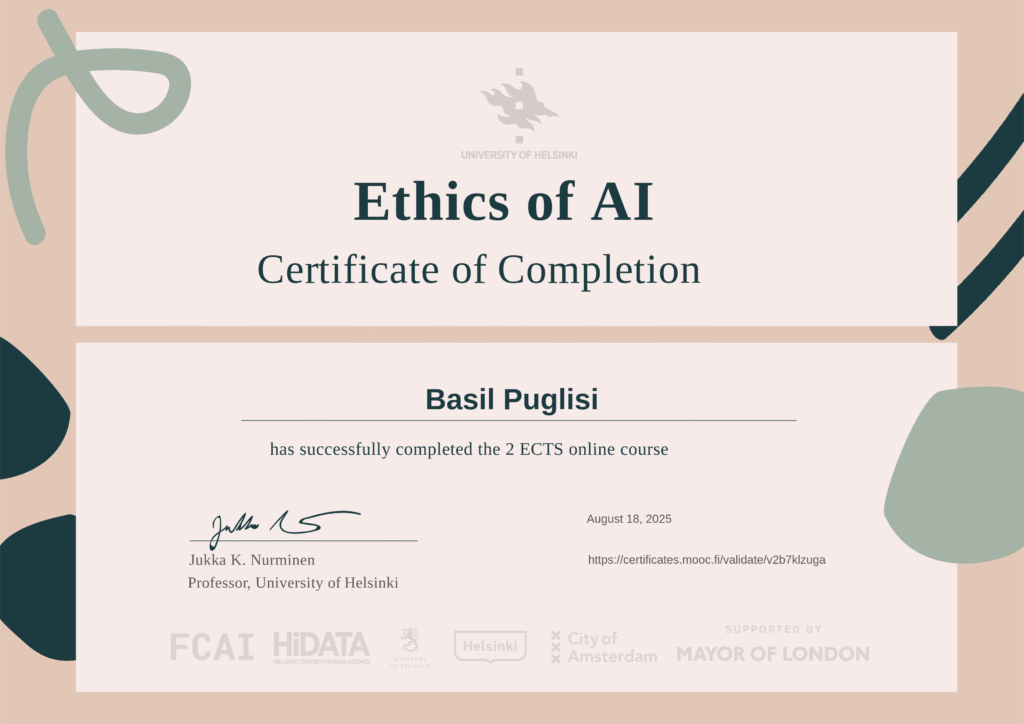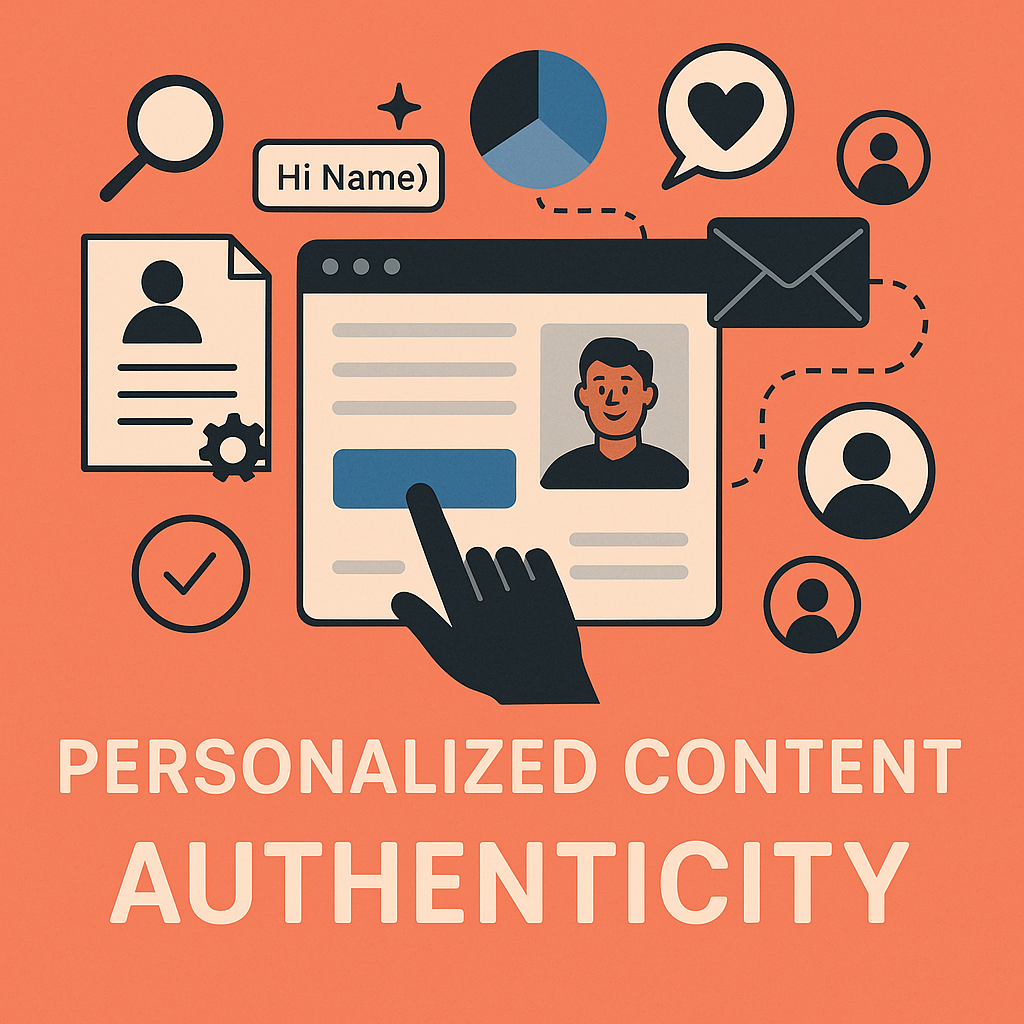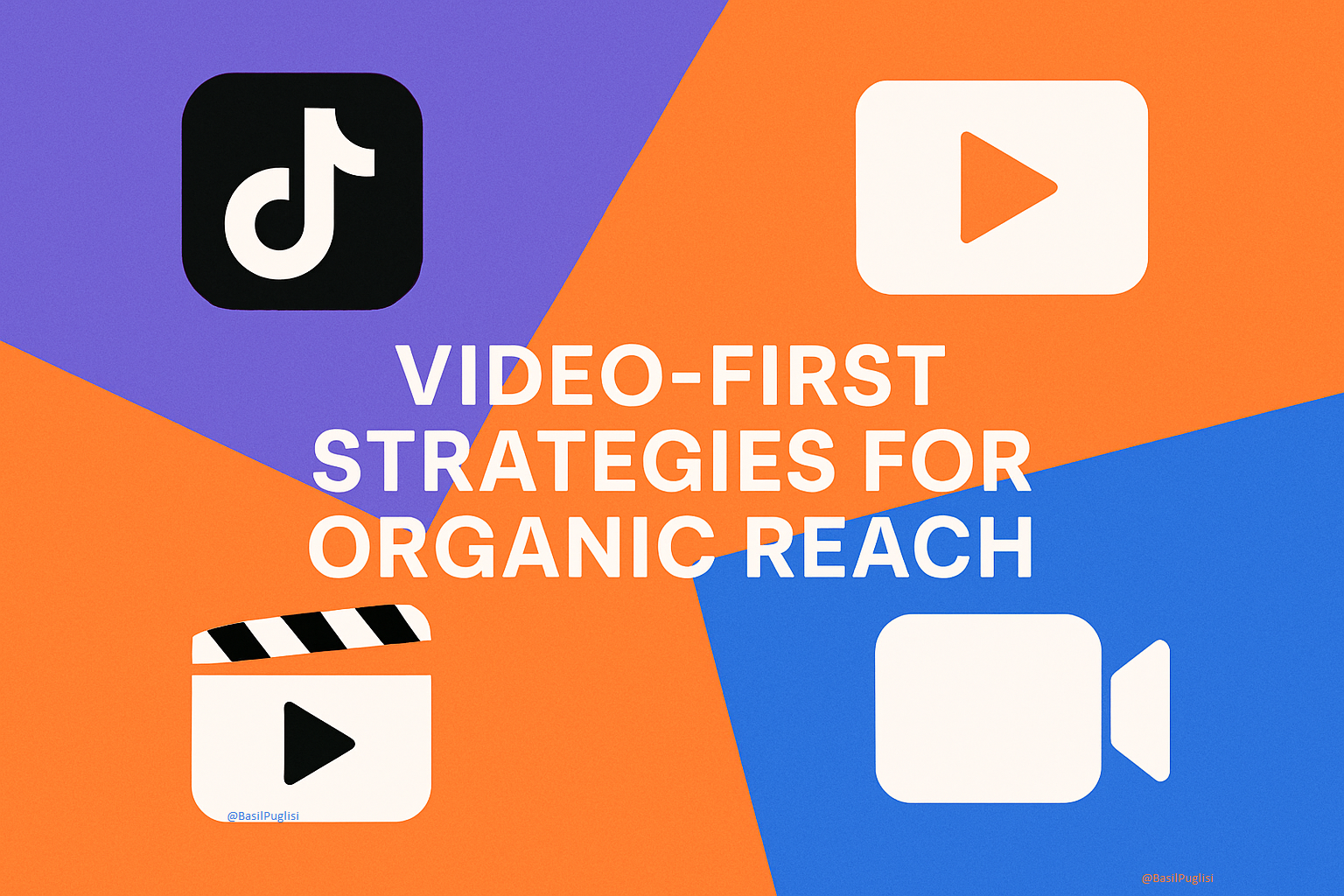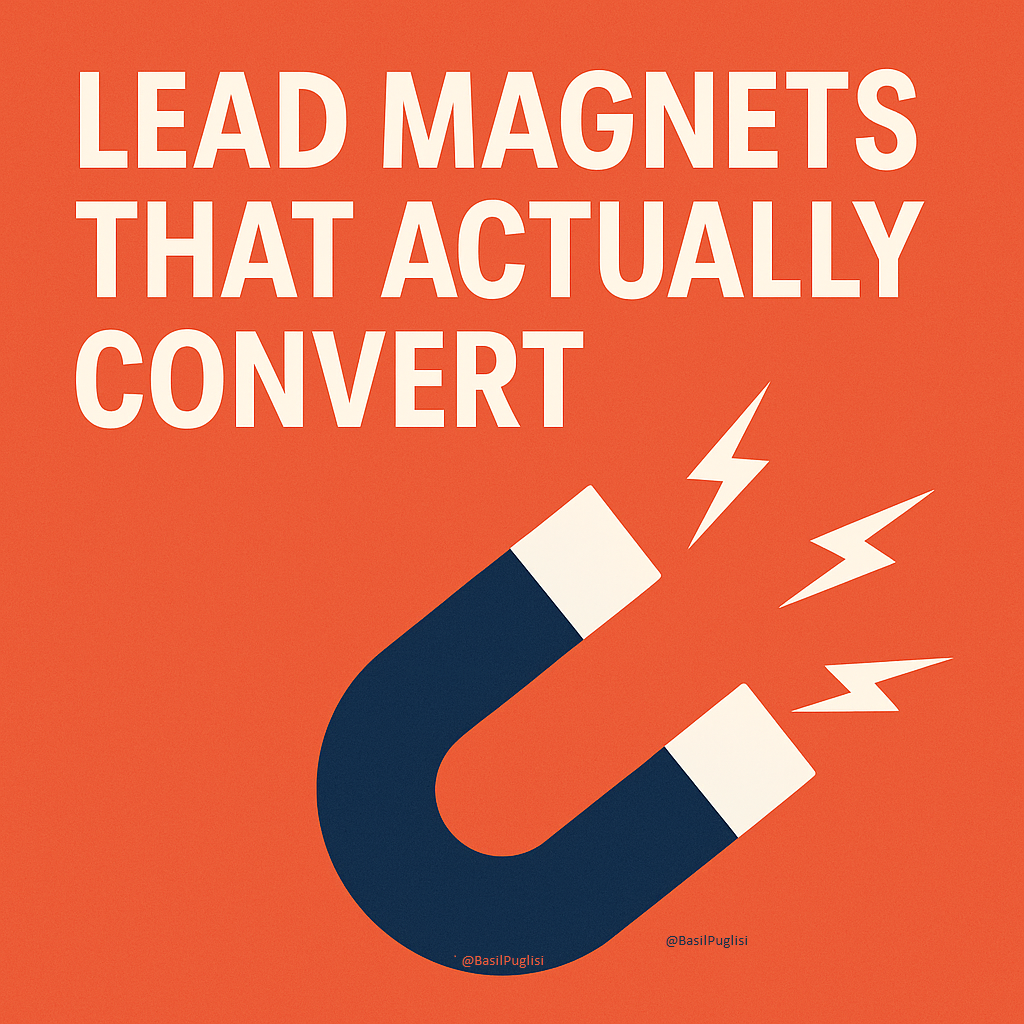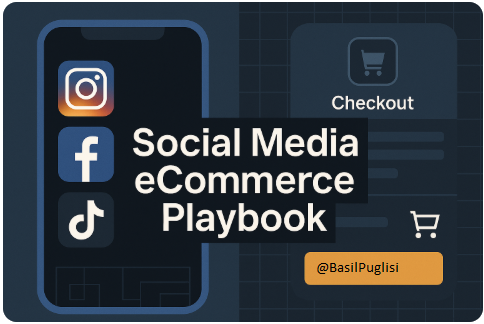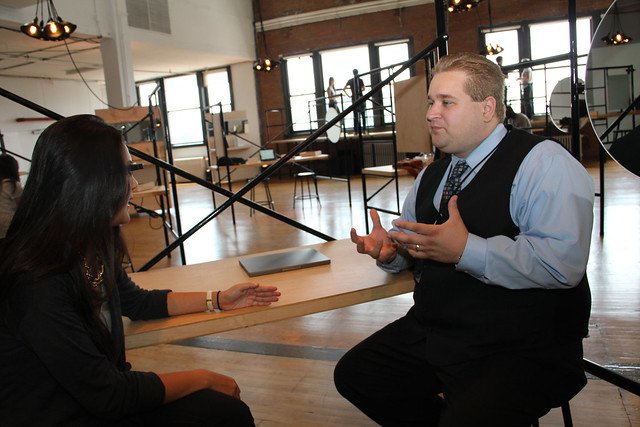
Basil C. Puglisi is a strategic consultant, digital media expert, educator, and author with a legacy rooted in teaching others how to influence with integrity. Since 2009, he has been at the forefront of digital communications—long before “influencer” became an industry term. His work spans consulting, publishing, and public speaking, all grounded in one core belief: clarity creates confidence, and confidence builds influence.
Almost Two Decades at the Forefront of Digital Strategy
In the early 2010s, Basil’s name appeared frequently across the digital media landscape. He spoke on national stages, published insights, and helped shape professional standards for a rapidly evolving field. He served on the Board of Directors for Social Media Club, advancing conversations on ethics and responsibility in media, and co-founded Social Media Action Camp (SMAC), producing collaborative events that generated measurable impact.
As founding editor of Digital Ethos, a nonprofit publication, Basil created a platform for responsible discourse online. His work has been published or featured in outlets including Newsday, Social Media Today, and Social Media Monthly.

Proven Experience with Brands, Events, and Community
Basil’s work in digital strategy has always been about building stages—literal and figurative—where ideas, brands, and communities could connect.
He co-produced the Parents & Baby Expo, a nine-location trade show series that partnered with Huggies, Mead Johnson, Babies “R” Us, and other household names, while also producing exhibitor video content that gave smaller brands a national-level spotlight.
He also worked on the AOL launch of Patch.com on Long Island, partnering with local Chambers of Commerce to build visibility through advertising, content, and small business video campaigns.

At Social Media Week NYC, Basil produced and hosted events that brought global platforms and thought leaders into direct conversation. His sessions featured representatives from Google, Facebook, Tumblr, StumbleUpon, Constant Contact, and Empire Avenue, as well as authors like Ekaterina Walter (Think Like Zuck) and Brian Solis (What’s the Future of Business). Smaller agencies and innovators—including Bumblebee Media, Internet Marketing Labs, Heyo, Wbbgrrls International, and Hyperactivate—also joined, underscoring Basil’s role as a connector across the ecosystem.
At Social Media Action Camp (SMAC), Basil curated and hosted some of the leading voices in digital marketing, including:
- Ekaterina Walter (Intel)
- Scott Monty (Ford)
- Ric Dragon (Social Marketology)
- Wendi Capllon-Carol (Constant Contact)
- Duleepa Wijayawardhana (Empire Avenue)
- Nelly Yusupova (WebGrrls International)
- Amy Vernon (Internet Media Labs)
- Mark Coatney (Tumblr)
Social Media Action Camp (SMAC): Teachers Not Speakers™
In 2012, SMAC became one of the most impactful events at Social Media Week NYC, built around Basil’s philosophy of “Teachers, Not Speakers™.”
- #SMWsmac generated 1,484 tweets across 15 countries, representing about 5% of all social activity in NYC that week.
- Sessions drew 976 views on Livestream and 71 check-ins on Foursquare.
- The official event page drove 177 Facebook Likes, 250 LinkedIn shares, and 834 additional tweets, making SMAC the most socially shared event worldwide for Social Media Week 2012.
- Kred and Ogilvy’s Movers & Shakers ranked Basil the #1 Top Influencer of Social Media Week NYC 2012.
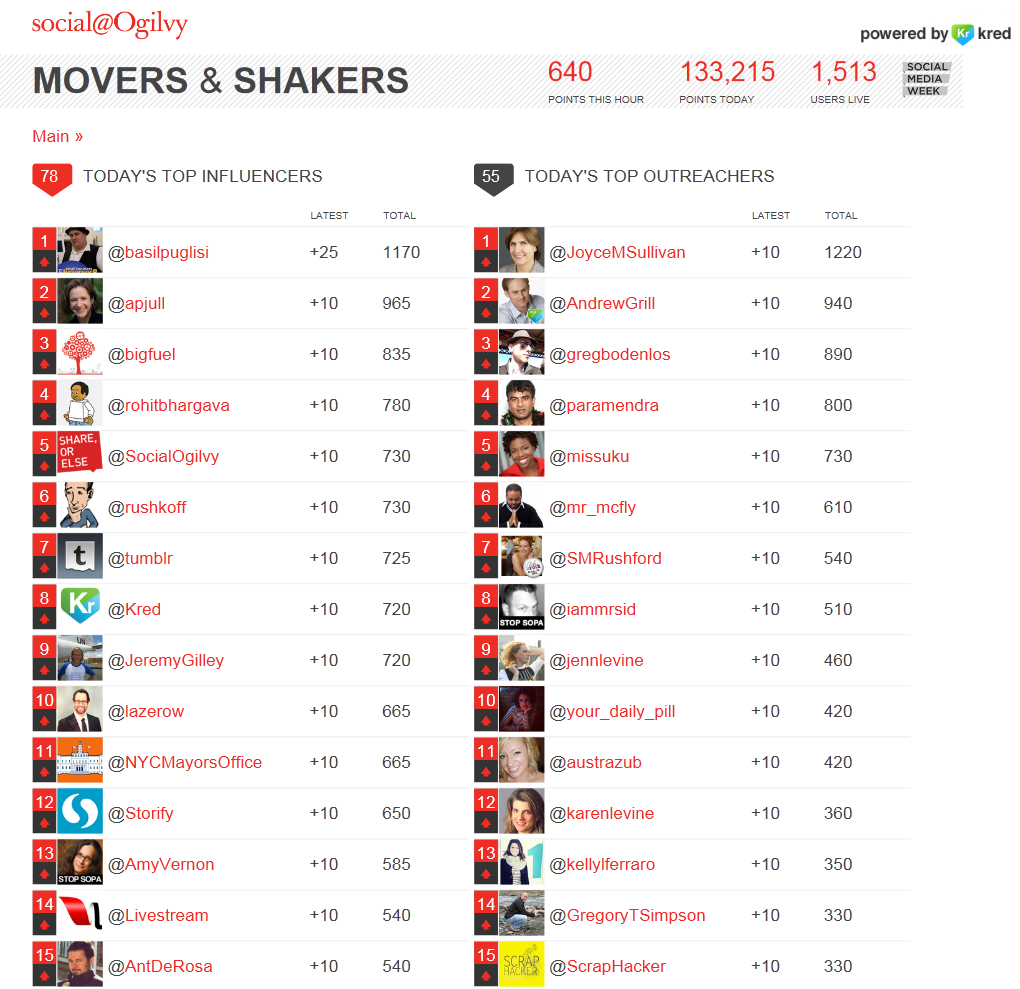
📌LI experts to lead social-media event in NYC
📌 Ogilvy Movers & Shakers Leaderboard graphic
The 2013 SMAC Summit expanded further:
- 128 attendees (sold out)
- 3,000+ tweets
- Over 10 million impressions
- 1,000+ Livestream views
- Generated 25% of all #SMWNYC impressions that day
Speakers included Dino Dogan (Triberr), Gemma Craven (Ogilvy), Christine Murphy (DDB), Ric Dragon (DragonSearch), Marc Fischman (Hyperactivate), Gabriel Shaoolian (Blue Fountain Media), Cynthia Sanchez (Oh So Pinteresting), Melonie Dodaro (TopDog Social Media), Amy Vernon, Hilary Topper, and Brian Solis (Altimeter Group).
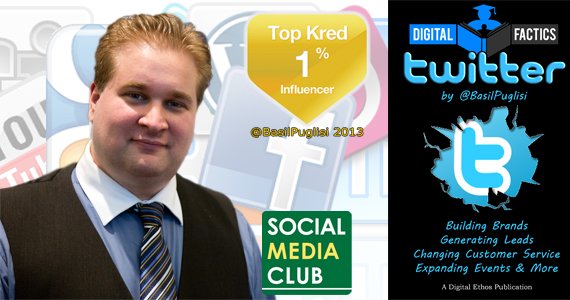
Through SMAC, Basil not only hosted conversations—he created data-driven, globally recognized events that shaped the dialogue of Social Media Week.
Early Technology Pioneer

In 2013, Basil became the first Long Island resident selected for the Google Glass Explorer program, a milestone covered by Newsday (“LIer test drives Google Glass,” July 8, 2013). He was one of only 10,000 Americans invited by Google to test the device, blending camera, display, touchpad, and microphone into a wearable headset.
That same year, Basil moderated a featured Google Glass panel at the NYXPO in New York City, leading a discussion with early Explorers on how wearable technology could transform communication, events, and storytelling.
By combining first-hand experience with public engagement, Basil positioned himself not just as an adopter of frontier technology but as a translator—helping professionals and organizations see how new tools could be applied strategically. That same forward-looking approach guides his current work in artificial intelligence.
📌 Newsday article: Newsday Staff. (2013, July 8). LIer test drives Google Glass. Newsday.
Healy, T. (Host). (n.d.). The Profit Express with Tim Healy [Radio broadcast interview with Basil Puglisi]. WRHU 88.7 FM. Available at https://youtu.be/7ZFDvPqG8Ws?feature=shared
Evolution Behind the Scenes
In 2014, Basil shifted into public service, a role that carried strict restrictions on personal use of social media and public visibility. While this reduced his presence on big stages and in public events, it expanded his capacity to guide organizations privately, focusing less on self-promotion and more on building systems that delivered results.
That period of quiet was not absence, but evolution. Spending less time showcasing himself made him a stronger consultant and teacher. It sharpened his ability to create clarity, enforce accountability, and measure outcomes for others.
Behind the scenes, Basil refined the methodologies that define his work today, including Factics—a blend of facts and tactics that turns information into action. His commitment to education over presentation also gave rise to his enduring philosophy: “Teachers, Not Speakers.”
Throughout this time, Basil continued publishing at BasilPuglisi.com, building an archive of more than 900 articles on digital strategy, content, and AI—making it one of the most extensive independent resources of its kind. He also advanced into artificial intelligence, completing the University of Helsinki’s Elements of AI and Ethics of AI certifications, most recently in August 2025.
This chapter was about depth, not disappearance. It provided the discipline of public service, the structure of proven methodologies, and the foresight of AI—tools Basil now brings into every consulting engagement and teaching opportunity.
Methodology and Publications
In 2012, Basil introduced Factics (Facts + Tactics + KPIs) at the NYXPO in NYC’s Javits Center as a model for turning information into action. This methodology became the foundation for his consulting and his first book, Digital Factics: Twitter.
Today, Basil is reviving the Digital Factics book series to guide professionals in mastering modern platforms with clarity and accountability. The release schedule includes:
- Digital Factics: Instagram — December 2025
- Digital Factics: X (revised edition) — January 2026
- Followed by titles on AI, YouTube, Facebook, TikTok, Reddit, LinkedIn, Medium, Threads, BlueSky, and other emerging platforms.
The series blends Basil’s Factics methodology with real-world tactics and KPIs, helping leaders and organizations turn digital complexity into measurable outcomes.
Beyond Consulting: Public Service and Leadership
Outside of consulting, Basil served 12 years in law enforcement. His work included authoring statistical reports, creating training materials for 1,600 officers, delivering FAA presentations on drone policy, and presenting expert testimony in court. This period honed his ability to communicate complex ideas, build scalable systems, and earn trust in high-stakes environments.
He holds dual BAs in Sociology and Criminal Justice, and a Master of Public Administration.
Today: Strategy in the AI Era
Today, Basil continues his mission through two channels:
- BasilPuglisi.com → his personal thought leadership hub, featuring articles on AI, content, and strategy.
- Puglisi Consulting → his selective consulting practice, where he applies board-level oversight to events, campaigns, and strategic initiatives.
Through speaking engagements, consulting, and publishing, Basil remains dedicated to one mission: helping others turn ideas into action and content into clarity—always backed by facts, always rooted in purpose.
“Influence is earned, not bought. It starts with clarity, is built with content, and stands on facts. It is far more important to be purposeful than first to publish.”
— Basil C. Puglisi, M.P.A.
Newsday Publications Featuring Basil Puglisi
- Herzlich, J. (2012, February 13). LI experts to lead social-media event in NYC. Newsday. Retrieved from https://www.newsday.com/business/li-experts-to-lead-social-media-event-in-nyc-b25737
- Newsday Staff. (2013, March 22). LI People on the Move: Basil Puglisi appointed to Social Media Club board of directors. Newsday. Retrieved from https://www.newsday.com/classifieds/jobs/li-people-on-the-move-march-22-2013-a29067
- Herzlich, J. (2013, May 20). Small business: How much is a Facebook fan worth? Newsday. Retrieved from https://www.newsday.com/business/columnists/jamie-herzlich/small-business-how-much-is-a-facebook-fan-worth-q48866
- Newsday Staff. (2013, July 8). LIer test drives Google Glass. Newsday. Retrieved from https://www.newsday.com/business/technology/lier-test-drives-google-glass-r86043
- Herzlich, J. (n.d.). Find, link to your industry’s online influencers. Newsday. Retrieved from https://www.newsday.com/business/columnists/jamie-herzlich/find-link-to-your-industry-s-online-influencers-p05495
Other Media Features
- Puglisi, B. (2012, July 19). VIDEO: Basil Puglisi of Digital Ethos on Marketing Made Simple TV. Social Media Today. Retrieved from https://www.socialmediatoday.com/content/video-basil-puglisi-digital-ethos-marketing-made-simple-tv
- Healy, T. (Host). (n.d.). The Profit Express with Tim Healy [Radio broadcast interview with Basil Puglisi]. WRHU 88.7 FM. Available at https://youtu.be/7ZFDvPqG8Ws?feature=shared
- Stony Brook University SBDC. (2013, May 21). Understanding Social Media Marketing [Workshop handout]. Hilton Long Island. Retrieved from https://www.stonybrook.edu/commcms/sbdc/_pdf/Puglisi.5.2013-Understanding-Social-Media%20Marketing.pdf

